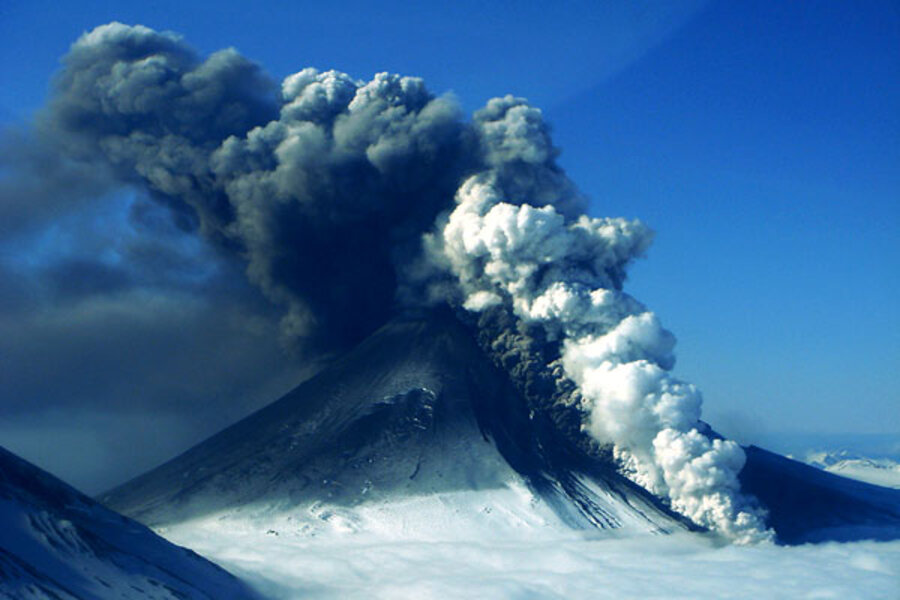Pavlof Volcano ash cloud shows Alaska's threat to air travel
Loading...
For the second time in a month, a volcano in Alaska's remote Aleutian chain has erupted, spotlighting America's most active portion of the Ring of Fire.
In early May, Cleveland Volcano saw three quick explosions – part of a pattern of increased activity since 2011. Reports suggest that it is still rumbling, with lava flows recorded as recently as Tuesday. But no ash clouds have been seen for a week.
Now, Pavlof Volcano is erupting, and local reports suggest that it might be just getting started.
The event began on Monday, with ash clouds reaching 15,000 feet. By Wednesday, the ash had hit 20,000 feet, and the National Weather Service had designated the eruption a "significant meteorological event" that could disrupt local air traffic.
The ash from Pavlof would have to reach 35,000 feet to disrupt international flights that use Alaskan airspace as a corridor for traffic between Asia and North America. For now, that is not forecast, but the eruption bears watching, experts say.
Pavlof has "reared its ugly head a couple times in the last 14 years, but nothing this significant," Theo Chesley, a pilot for a local air taxi who flew by the volcano twice Thursday, told the Alaska Dispatch Saturday.
The eruption could go on for months, said Jeff Freymueller, coordinating scientist at the Alaska Volcano Observatory, in the Alaska Dispatch report. "At this point we're assuming that it's going to be at least weeks."
Ninety percent of air freight from Asia to Europe and North America flies over Alaska airspace, scientist Steve McNutt told CNN.
"We think of the Aleutian Islands as being remote and desolate, but when you come up to 30,000 feet we are talking about 20 to 30,000 people there every single day," said John Power, a scientist from the US Geological Survey, in the CNN report.
Pavlof is an 8,261-foot cone near the tip of the Alaska Peninsula – a long, thin finger of land that extends southwest from the Alaska mainland. From there, the Aleutian Islands sweep out into the Pacific toward Russia in a 1,200-mile chain of volcanic islands. Cleveland Volcano, which reaches an elevation of 5,676 feet, is on uninhabited Chuginadak Island.
Cleveland and Pavlof "are very similar, and both have the ability to erupt," said Dr. Power.
The Aleutians and the southern coast of Alaska make up the northern edge of the Ring of Fire – an area of heightened volcanic and seismic activity that circles the Pacific from New Zealand to the Philippines to Mexico to Chile.
Though the Ring of Fire also includes parts of Washington, Oregon, and California, Alaska is by far the most volcanically active area in the United States. The state's 40 active volcanoes account for more than 80 percent of the active volcanoes in the country.
Pavlof last erupted in 2007 and is "one of the most historically active volcanoes in the Northern Hemisphere," Power told CNN.
About 40 miles southwest in Cold Bay, Alaska (pop. 108), residents are worried about the potential ash fall, which could damage power generators. Currently, winds are blowing the ash away from the village.
‘‘Everybody is thinking about it,’’ local air-traffic controller John Maxwell told The Associated Press. ‘‘Not that anybody is afraid they’re going to be like Mount Vesuvius and turned into little mummies.’’






